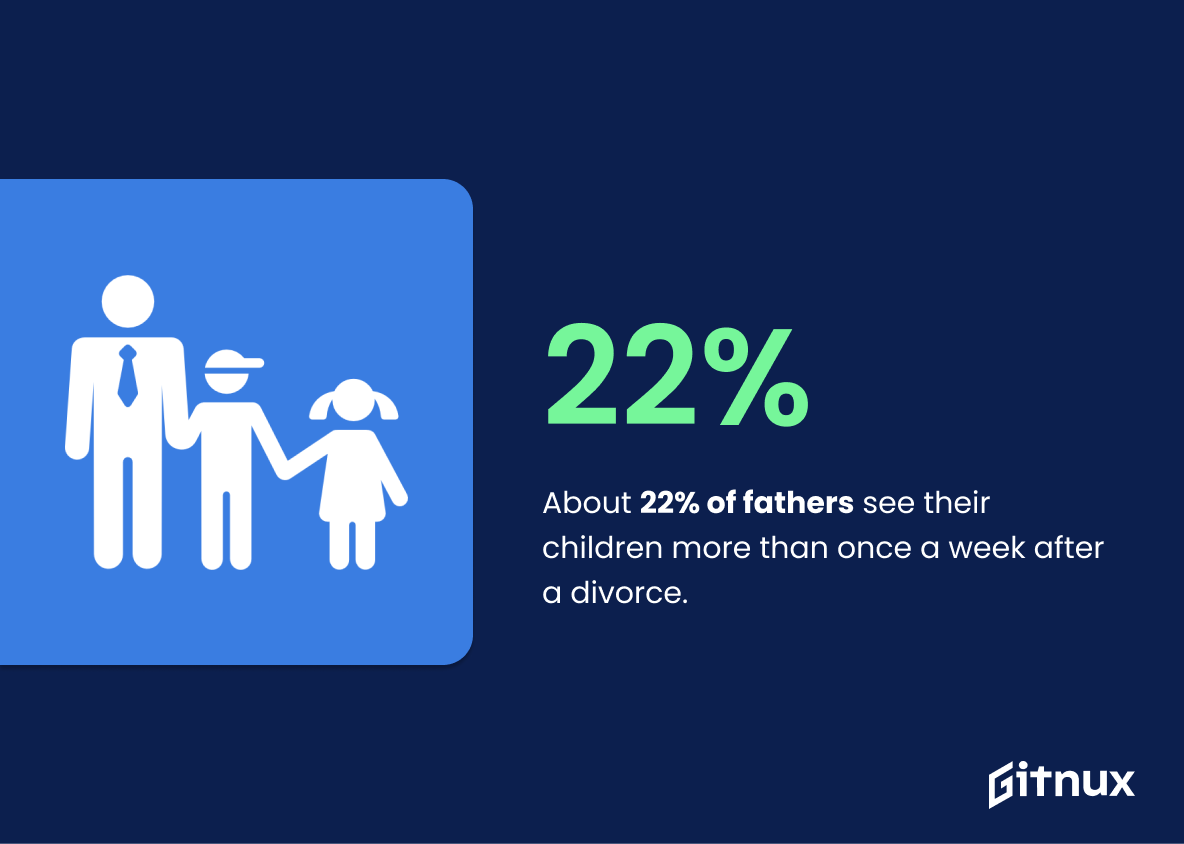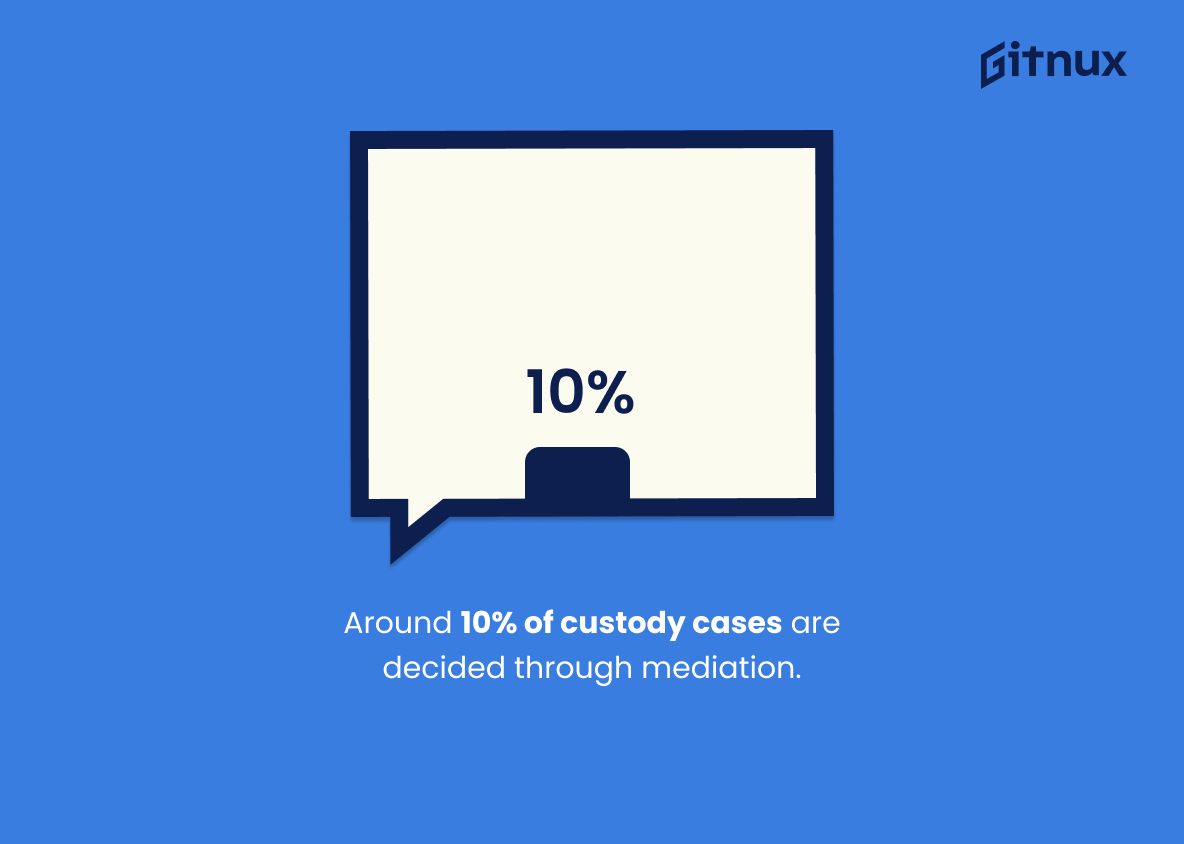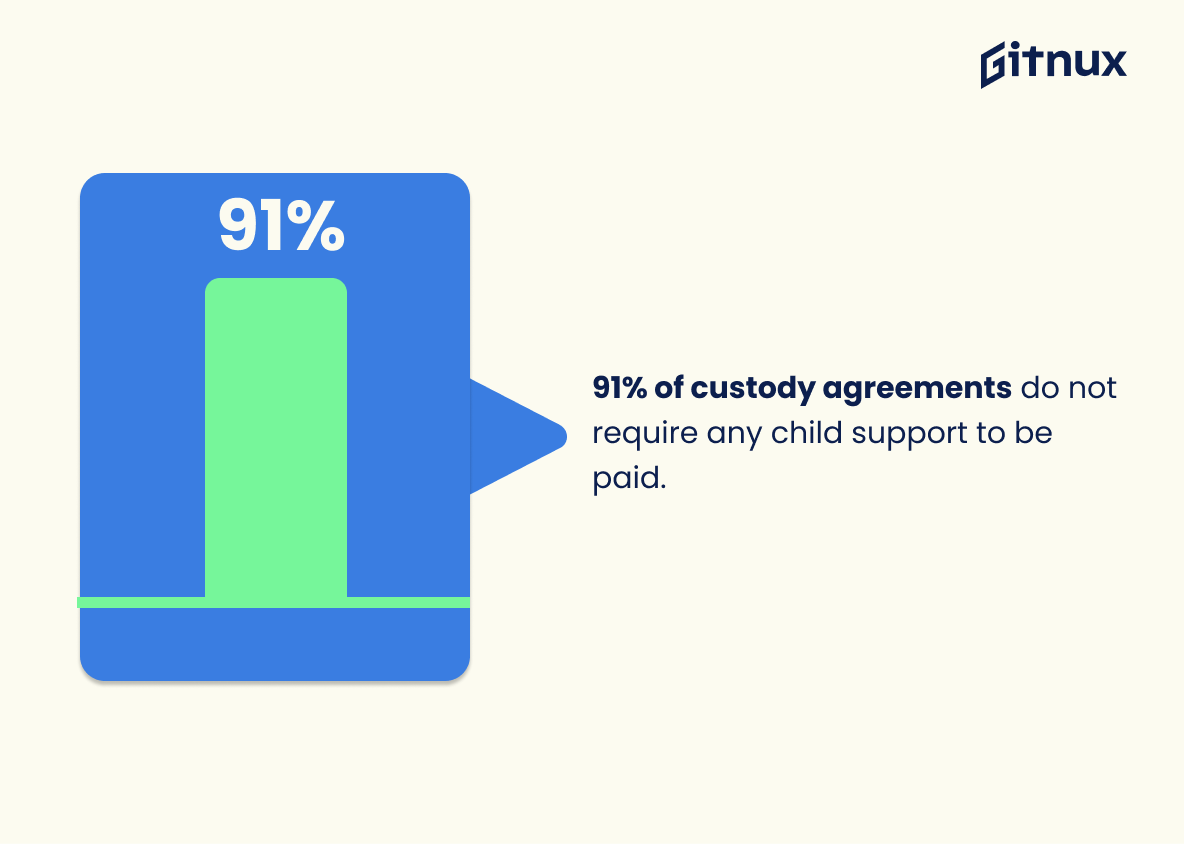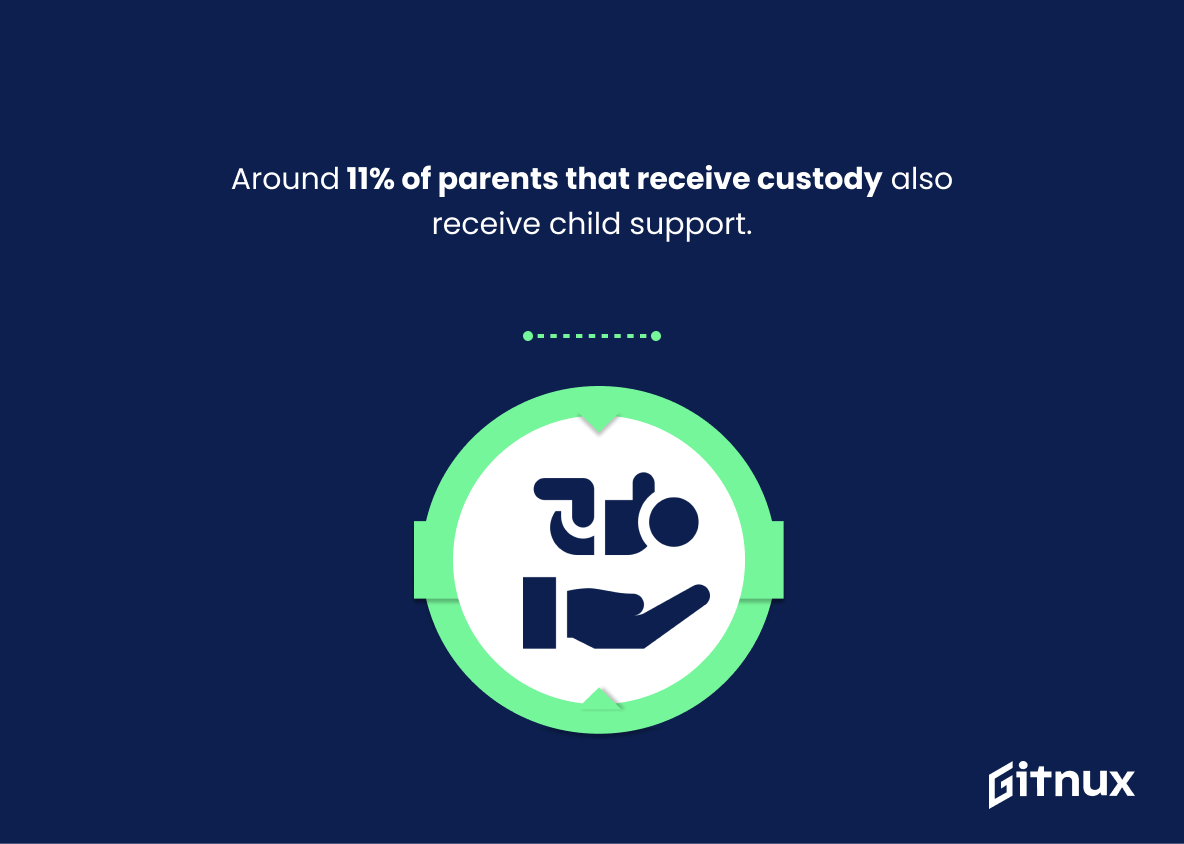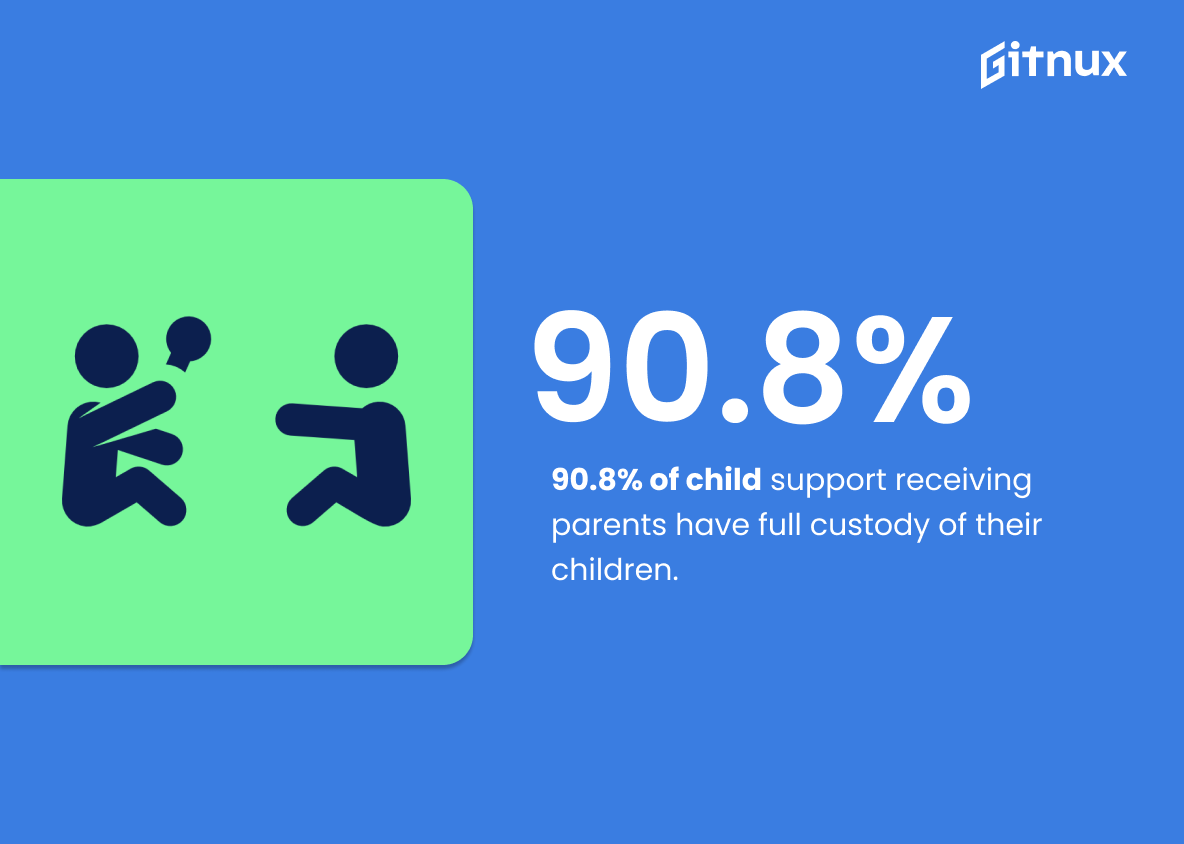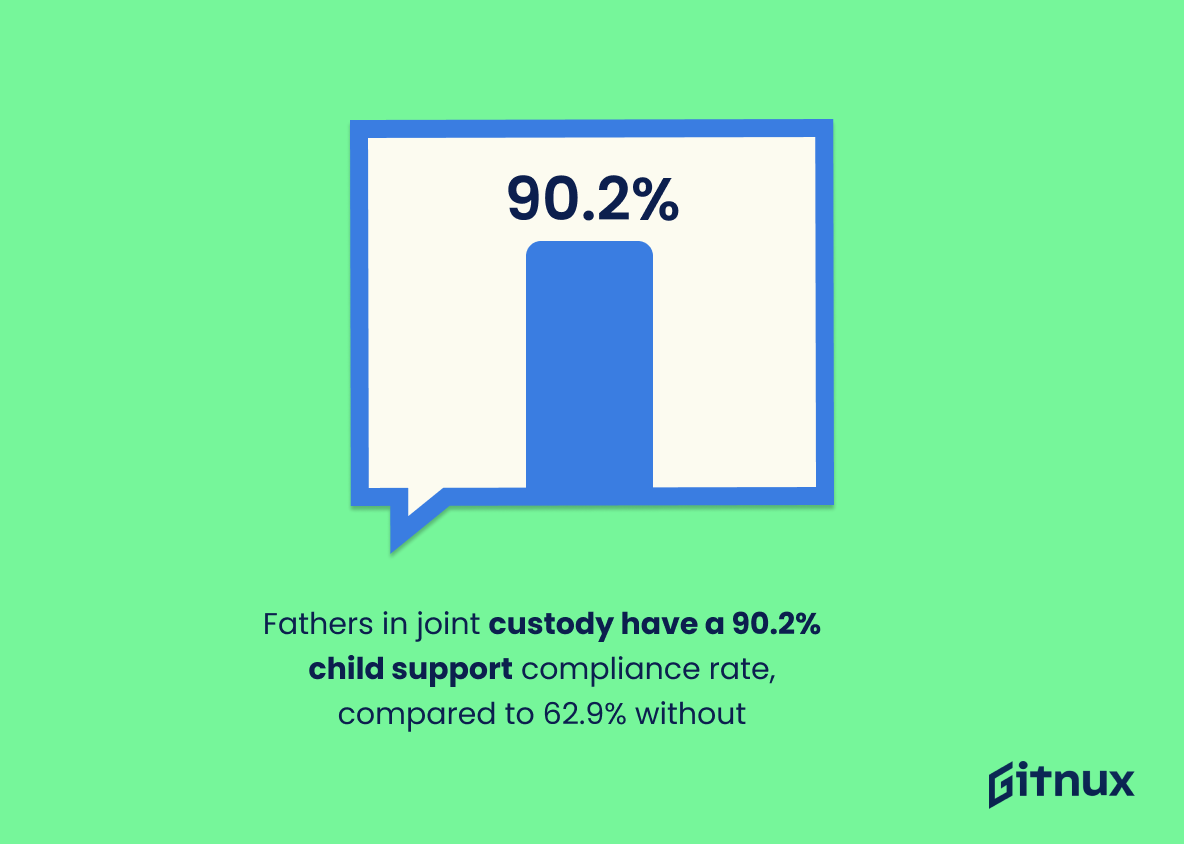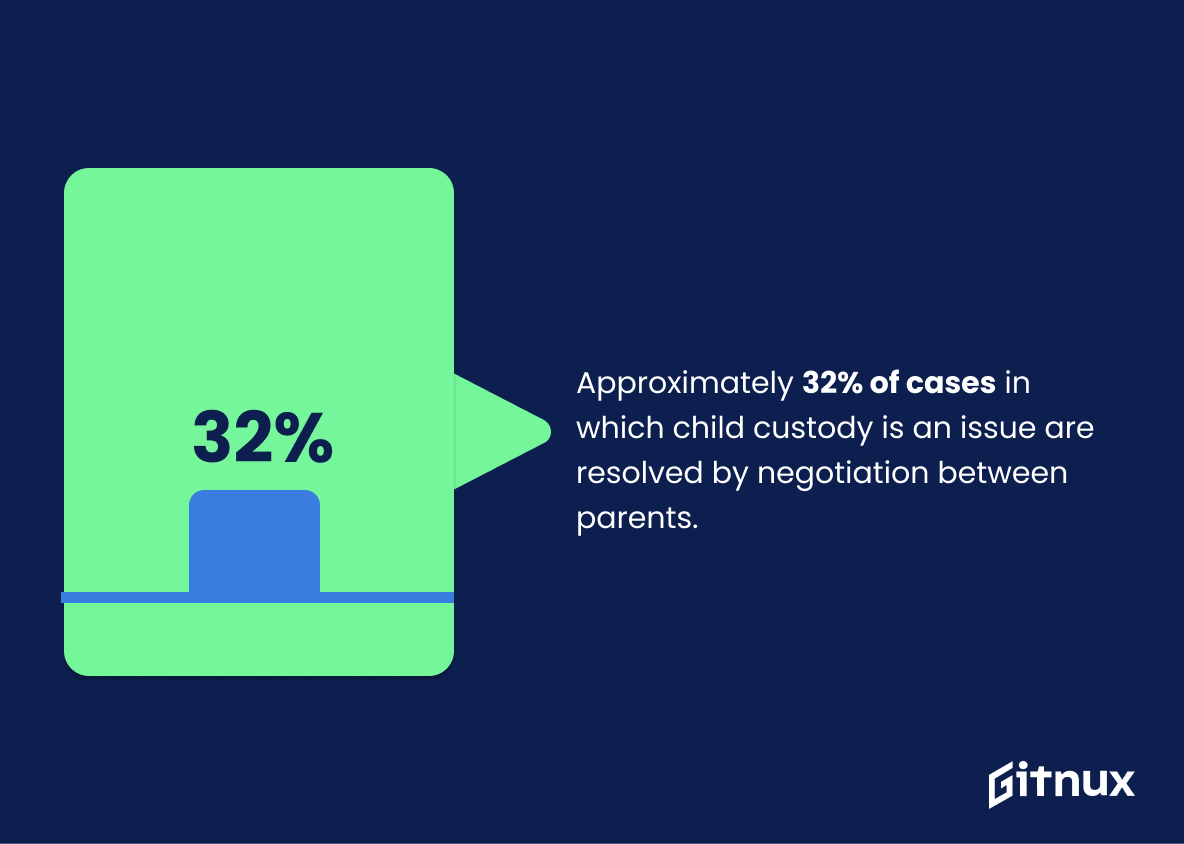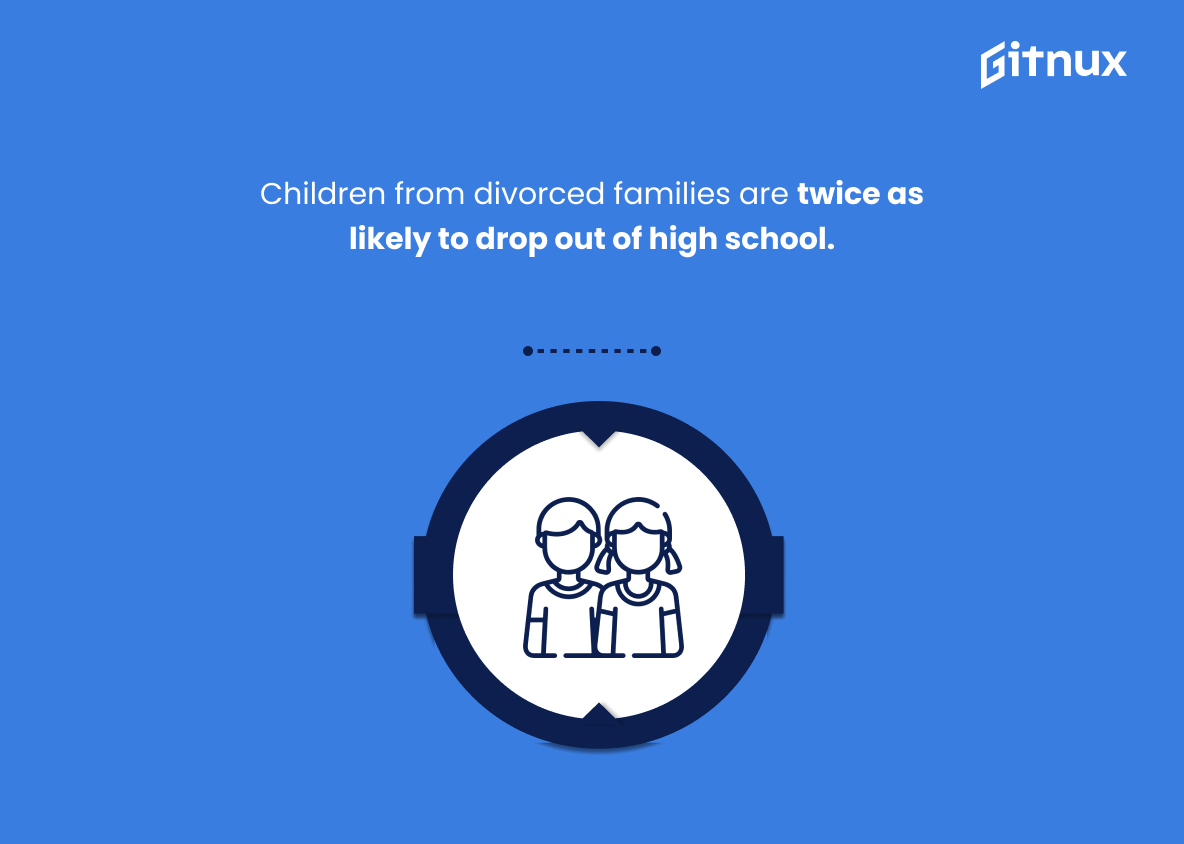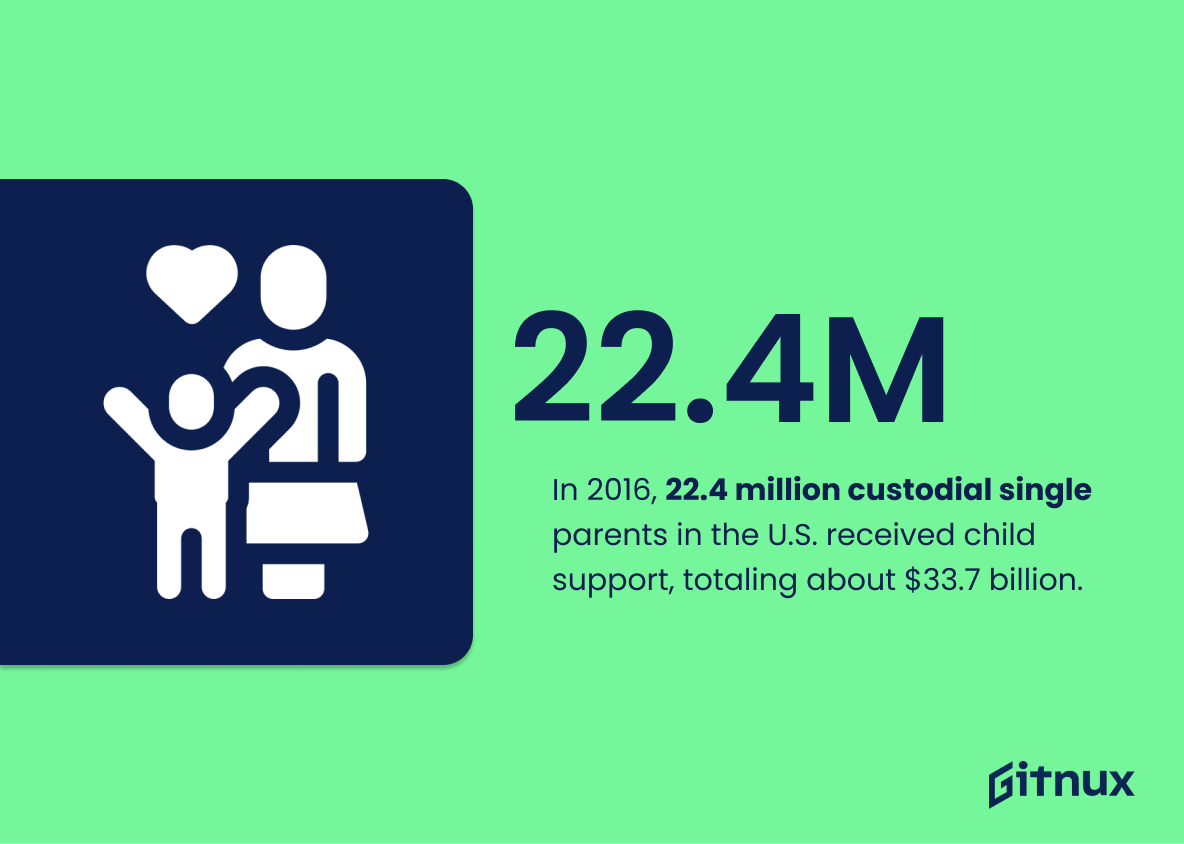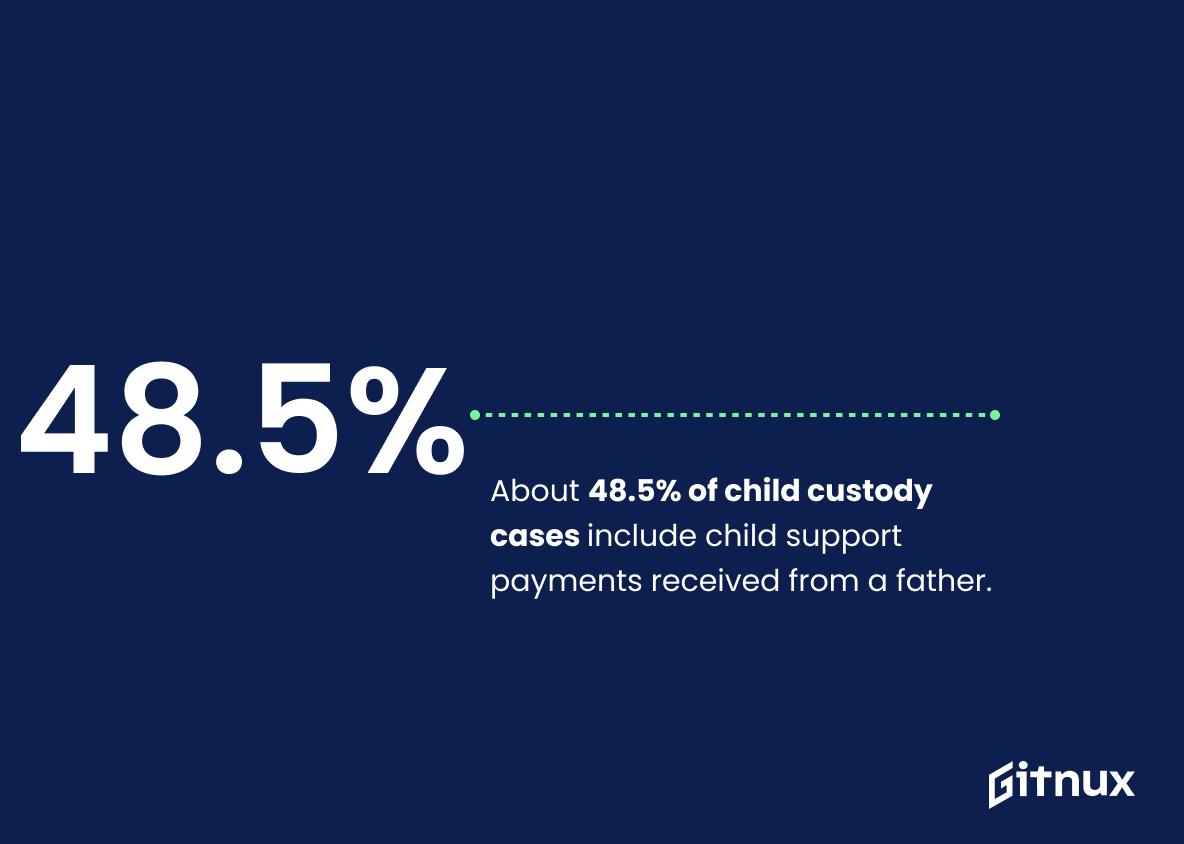Divorce is a difficult process for all involved, especially children. It can be hard to understand the full scope of how divorce affects families and what happens during custody proceedings. To help provide some insight into this complex issue, here are 20 statistics about divorce custody in the United States:
This statistic is a stark reminder of the prevalence of divorce in the United States, and the impact it has on children. It highlights the need for further research into the effects of divorce on children, and the importance of providing support for those affected. It also serves as a reminder of the importance of understanding the legal implications of divorce, and the need for parents to be aware of their rights and responsibilities when it comes to custody arrangements.
Women are awarded child custody in about 83% of divorces cases.
This statistic is a powerful indicator of the prevalence of women being awarded child custody in divorce cases. It highlights the importance of understanding the legal implications of divorce and the potential outcomes for both parties. It also serves as a reminder of the need for both parties to be aware of their rights and responsibilities when it comes to child custody. This statistic is an important part of the conversation when discussing divorce custody statistics.
Divorce Custody Statistics Overview
About 22% of fathers see their children more than once a week after a divorce.
This statistic is a powerful reminder of the importance of fathers in the lives of their children, even after a divorce. It shows that, despite the difficulties of a divorce, many fathers are still making an effort to stay involved in their children’s lives. This statistic is a testament to the strength of the bond between fathers and their children, and it is a reminder that divorce does not have to mean the end of a meaningful relationship between parents and their children.
Around 10% of custody cases are decided through mediation.
This statistic is significant in the context of divorce custody statistics because it highlights the potential for couples to reach an agreement without having to go through a lengthy and expensive court process. Mediation can be a more cost-effective and less stressful way to resolve custody issues, and this statistic shows that it is a viable option for many couples.
Only 4% of custody cases actually go to trial.
This statistic is a powerful indicator of the prevalence of out-of-court settlements in custody cases. It suggests that the vast majority of custody cases are resolved without the need for a trial, which can be a lengthy and expensive process. This is beneficial for both parties, as it allows them to reach an agreement quickly and without the need for costly legal fees. Furthermore, it can help to reduce the emotional strain of a custody battle, as the parties can come to an agreement without having to go through the stress of a trial.
91% of custody agreements do not require any child support to be paid.
This statistic is a powerful indicator of the prevalence of custodial arrangements that do not involve any financial support from one parent to the other. It highlights the fact that, in many cases, parents are able to come to an agreement that does not involve any financial obligations, and that this is a viable option for many families. This statistic is important to consider when discussing divorce custody statistics, as it provides insight into the different types of arrangements that are available to divorcing couples.
Around 11% of parents that receive custody also receive child support.
This statistic is significant in the context of divorce custody statistics because it provides insight into the financial realities of parents who receive custody of their children. It highlights the fact that, while custody is often awarded to one parent, the other parent is still expected to provide financial support. This statistic is a reminder that, even after a divorce, both parents are still responsible for the well-being of their children.
90.8% of child support receiving parents have full custody of their children.
This statistic is significant in the context of divorce custody statistics because it highlights the importance of child support in ensuring that parents with full custody of their children are able to provide for them. It also demonstrates the prevalence of full custody arrangements, which can be beneficial for both parents and children. Furthermore, it shows that the majority of parents receiving child support are able to provide for their children without having to rely on the other parent.
Fathers in joint custody arrangements have a higher rate of child support compliance (90.2%) than those without such arrangements (62.9%).
This statistic is a powerful indicator of the importance of joint custody arrangements in ensuring that child support payments are made. It shows that when both parents are involved in the custody arrangement, there is a much higher rate of compliance with child support payments. This highlights the need for parents to work together to ensure that their children are provided for financially, even after a divorce.
About 51% of child custody cases are settled without involvement from the family court.
This statistic is significant in the context of a blog post about Divorce Custody Statistics because it highlights the fact that a majority of child custody cases are able to be resolved without the need for court intervention. This is important because it shows that, in many cases, parents are able to come to an agreement on their own, without the need for a judge to make a decision. This can be beneficial for both parties, as it can save time, money, and stress.
Approximately 32% of cases in which child custody is an issue are resolved by negotiation between parents.
This statistic is significant in the context of a blog post about Divorce Custody Statistics because it highlights the potential for parents to come to an agreement on their own, without the need for a court to intervene. It demonstrates that, in many cases, parents are able to work together to reach a mutually beneficial outcome for their children. This is an important point to consider when discussing the various ways in which child custody can be determined.
Children from divorced families are twice as likely to drop out of high school.
This statistic is a stark reminder of the potential long-term effects of divorce on children. It highlights the importance of providing children with a stable and supportive environment, even after a divorce, to ensure that they have the best chance of succeeding in life. It also serves as a warning to parents that the decisions they make during a divorce can have a lasting impact on their children’s future.
In 2016, 22.4 million custodial single parents in the U.S. received child support, totaling about $33.7 billion.
This statistic is a powerful reminder of the importance of child support in the lives of custodial single parents in the U.S. It highlights the fact that these parents are relying on this financial assistance to help them provide for their children, and that the amount of money received is significant. This information is essential to understanding the impact of divorce on families, and the importance of ensuring that children are provided for in the event of a divorce.
Only about 42.8% of custodial parents receive full child support payments.
This statistic is a stark reminder of the financial struggles that custodial parents often face after a divorce. It highlights the fact that many custodial parents are not receiving the full amount of child support payments that they are entitled to, leaving them with a financial burden that can be difficult to overcome. This statistic is an important part of the overall picture of divorce custody statistics, as it provides insight into the financial realities of many custodial parents.
About 48.5% of child custody cases include child support payments received from a father.
This statistic is significant in the context of a blog post about Divorce Custody Statistics because it highlights the importance of fathers in the lives of their children. It shows that even after a divorce, fathers are still actively involved in their children’s lives and are providing financial support. This statistic is a reminder that fathers are an integral part of their children’s lives and should be respected and appreciated.
Approximately 33% of divorces in the United States involve couples with at least one child under the age of 18.
This statistic is a stark reminder of the reality that divorce can have a profound impact on children. It highlights the importance of ensuring that children are taken into consideration when making decisions about divorce and custody. It also serves as a reminder that divorce can be a difficult and emotionally taxing process for all involved, especially for children.
In 2015, around 5.5% of children under age 18 lived with their divorced mother and 2.7% lived with their divorced father.
This statistic is a powerful reminder of the prevalence of divorce in our society and the impact it has on children. It highlights the fact that many children are living with only one parent, often their mother, and that this can have a significant effect on their lives. It also serves as a reminder that divorce can be a difficult and emotionally draining experience for both parents and children, and that it is important to provide support and resources to those affected.
Conclusion
From the statistics presented, it is clear that divorce has a significant impact on children and families. Approximately 50% of all children in the United States experience their parents’ divorce, with women being awarded child custody in 83% of cases. Joint custody arrangements are relatively rare at only 29%, while fathers typically see their children less than once per week after a divorce (22%). Most divorces do not require any child support payments to be made (91%), but when they do non-custodial mothers pay an average of $3126 compared to $4458 for non-custodial fathers. Custody agreements are often settled without involving family court or going through mediation/trial processes; 51% and 10%, respectively. In 2016, 22 million custodial single parents received about 33 billion dollars in total from child support payments – however 42.8% did not receive full payment amounts due them by law. It is also important to note that divorced couples with kids under 18 make up around 33 percent of all divorces each year, and 8 percent have sole custody where no decision making responsibility is shared between mother and father figures alike – 5.5 % living solely with mom versus 2 .7 % living solely with dad as reported by Kids Count Data Center 2015 report.. Divorce can have long lasting effects on both adults involved as well as the affected children who may face higher drop out rates from high school twice more likely than those whose parents remain married according to The Atlantic 2014 article “The Economic Effects Of Divorce” Ultimately these statistics demonstrate how complex issues surrounding parenting post-divorce can be for everyone involved
References
0. – https://www.census.gov
1. – https://www.verywellfamily.com
2. – https://www.divorceeducation.com
3. – https://www.usatoday.com
4. – https://www.pewresearch.org
5. – https://www.aacap.org
6. – https://www.time.com
7. – https://www.theatlantic.com
8. – https://www.datacenter.kidscount.org
9. – https://www.ncbi.nlm.nih.gov
